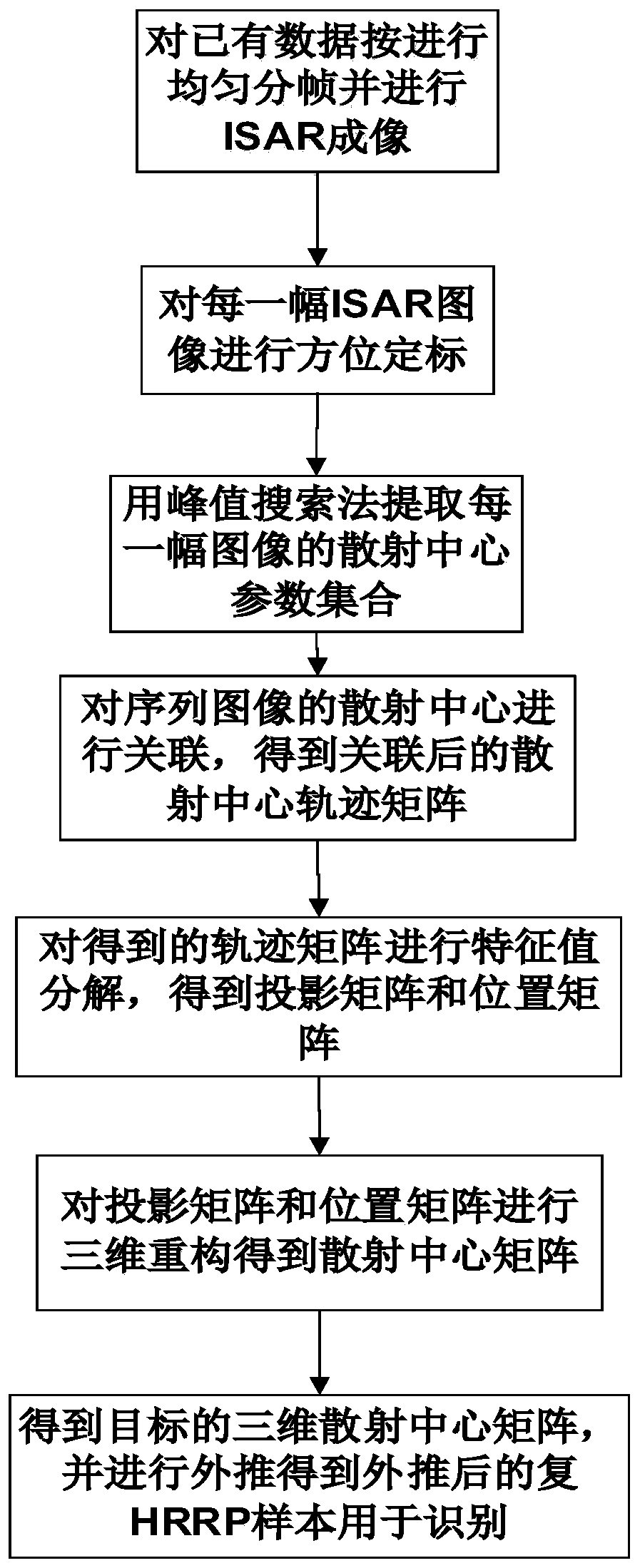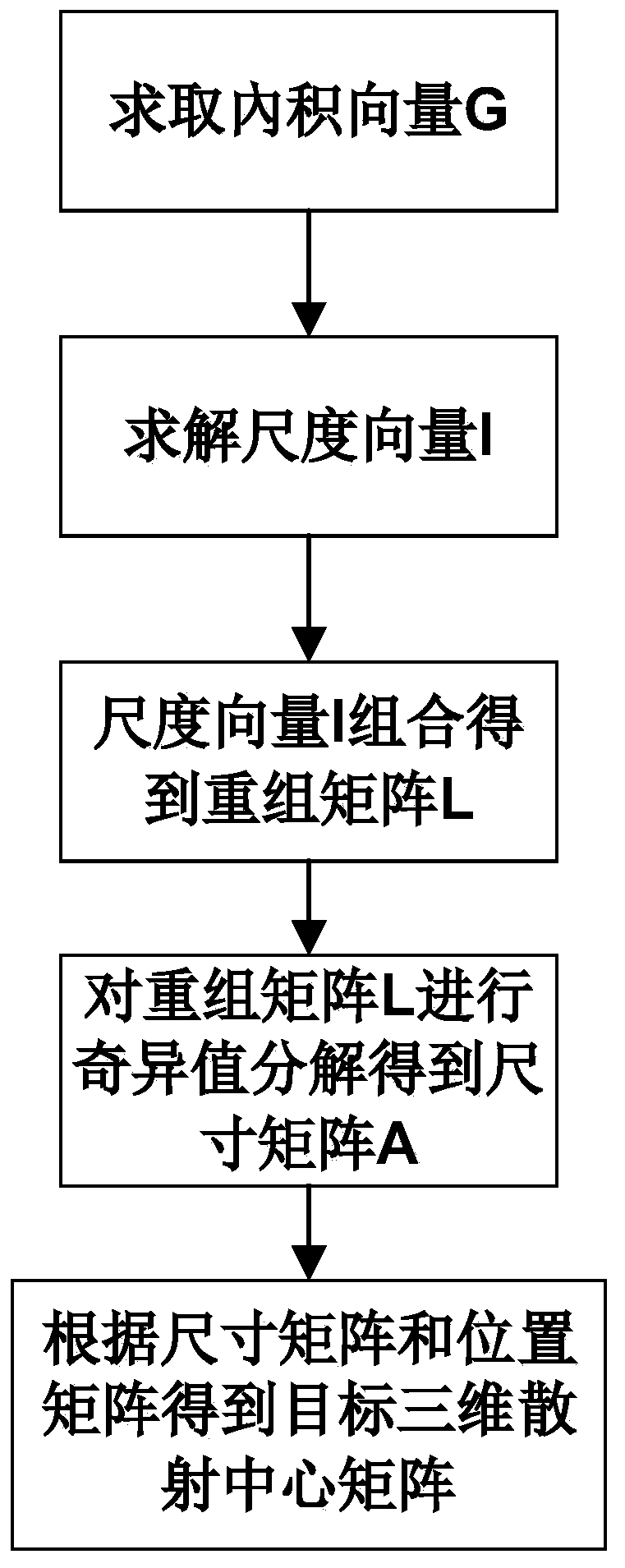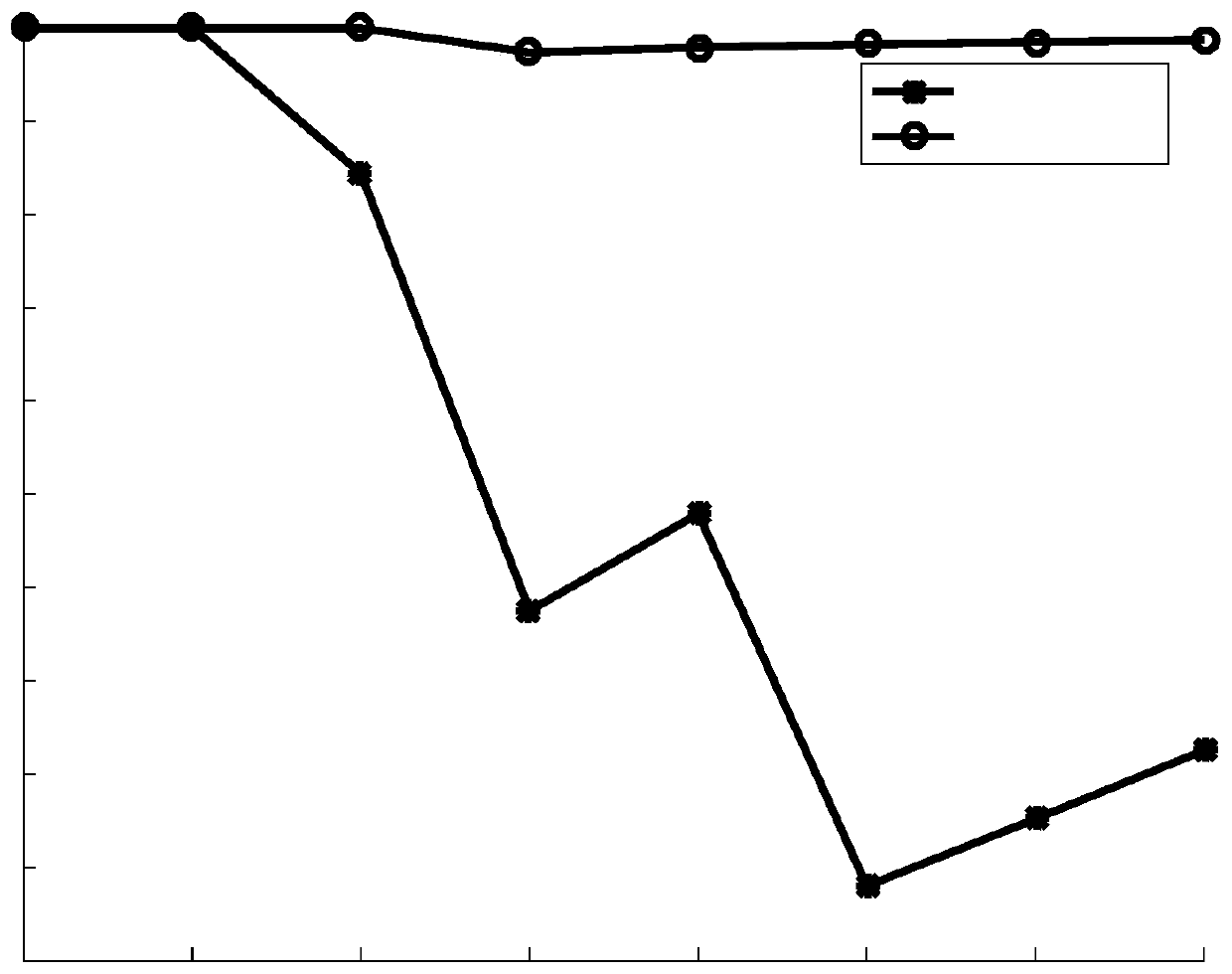Space target posture extrapolation method based on three-dimensional reconstruction
A technology of three-dimensional reconstruction and space target, which is applied in the field of data processing to achieve the effect of improving the recognition rate, ensuring the accuracy and improving the recognition rate of radar targets
- Summary
- Abstract
- Description
- Claims
- Application Information
AI Technical Summary
Problems solved by technology
Method used
Image
Examples
Embodiment Construction
[0025] The implementation force and effect of the present invention will be further described in detail below in conjunction with the accompanying drawings.
[0026] refer to figure 1 , the specific implementation steps of the present invention are as follows:
[0027] Step 1, evenly divide the data into frames and perform ISAR imaging.
[0028] The complex high-resolution range image HRRP acquired by the radar is uniformly divided into frames, and the continuous complex HRRP samples with a length of α are defined as a frame of data, where, B represents the bandwidth of the radar, L represents the horizontal size of the target, c represents the speed of light, and performs ISAR imaging on each frame to obtain a set of ISAR images.
[0029] Step 2, carry out azimuth calibration for each ISAR image.
[0030] According to the tracking data observed by the radar, the rotation angle β of the radar ray relative to the target is obtained for each frame of data, and the azimuth re...
PUM
 Login to View More
Login to View More Abstract
Description
Claims
Application Information
 Login to View More
Login to View More - R&D
- Intellectual Property
- Life Sciences
- Materials
- Tech Scout
- Unparalleled Data Quality
- Higher Quality Content
- 60% Fewer Hallucinations
Browse by: Latest US Patents, China's latest patents, Technical Efficacy Thesaurus, Application Domain, Technology Topic, Popular Technical Reports.
© 2025 PatSnap. All rights reserved.Legal|Privacy policy|Modern Slavery Act Transparency Statement|Sitemap|About US| Contact US: help@patsnap.com



